How to insulate pipes in the street
In accordance with generally accepted norms of SNiP, any section of a water pipe laid in the open air must have an insulating jacket that would reliably protect the pipe from the effects of frost. Only in this way can emergency situations in the operation of water communications (including wastewater systems) be avoided. Regardless of the material from which the pipe is made, in the case of freezing of the water circulating in it under certain conditions, a hard rupture of its walls is possible with the subsequent destruction of the entire communication system.
Of course, in order to avoid such troubles, you can try to lay lines of communication slightly below the mark of soil freezing, but such an approach to solving a problem is not always justified. This explains our desire to acquaint you with how to insulate pipes in the street, because in this way you will be able not only to protect the pipeline from freezing, but also to protect it from heat loss.
Thermal insulation materials

To maintain the water mains in a normal state, the insulation must be arranged along the entire length of the route, including the nodal points with couplings or adapters installed in them.
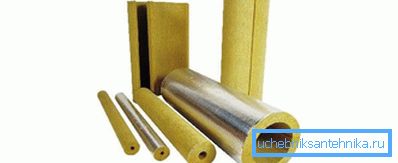
As for the heaters used to protect the open parts of pipes, the following materials are traditionally used here:
- Plain mineral wool with a layer of heat-reflecting foil.
- Cylinders of pressed basalt fibers.
- Synthetic insulation (penoizol, polystyrene foam, polyurethane foam).
- Special paint with thermal insulation properties.
- Polyethylene foam type.
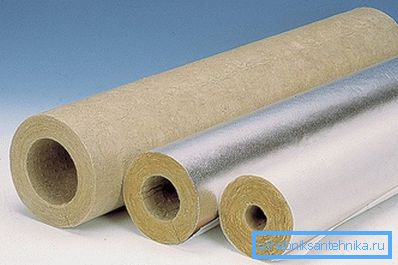
Tip! Basalt cylinders are usually used in open sections of the route, where it is not possible to install special stacking trays. On top of these cylinders are usually closed with a layer of roofing material or folgoisol.
Methods for insulating open pipelines
Thermal insulation of pipes placed directly in the ground will require you the most effort, since you will have to do not only earthworks, but also the installation of an insulating system that combines the elements of insulation and waterproofing. In a similar situation, each of the previously considered insulation materials will be applied taking into account a number of amendments:
- The use of thermoflex or foamed polyethylene, which is produced in the form of hollow cylinders, is that the latter are simply put on the serviced pipeline. The relatively high strength of this insulation material prevents its deformation under the pressure of the mass of the soil with an open lining.
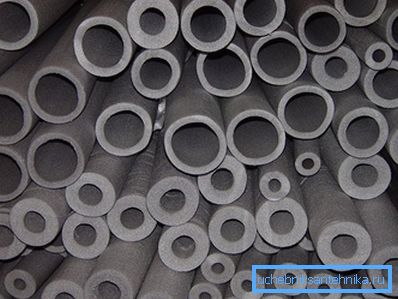
- But the expanded polystyrene, produced in the form of two shell-shaped halves, is equipped with a special tongue-and-groove joint, through which they are fixed to the body of the pipeline to be protected.
- Penoizol is used in the form of a liquid mass, which is applied to the surface of the pipe, thereby ensuring the tightness of the thermal insulation of structures. A feature of heat-shielding paint, which includes microparticles of ceramics, is that it is applied to the pipe by the method of aerosol spraying.
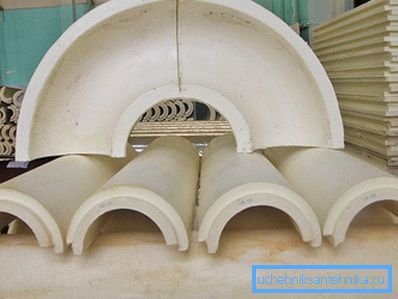
Heating of pipes with a special cable
In domestic conditions, external insulation of any pipe communications (heating, plumbing, sewage) can be implemented using a special heating cable.

To implement this venture, you will need the following materials:
- Heating cable power up to 20 W / m.
- Heat-insulating material that provides moisture retention.
- Self-adhesive foil adhesive tape.

The sequence of installation of the heating cable looks like this:
- First, along the pipe, a foil adhesive tape is glued along the route in the form of a spiral contour.
- Then the heating cable itself is laid directly along the plane of the adhesive tape.
- As you lay on top of the cable, a second layer of foil tape is pasted.
- After that, the previously prepared insulation material is carefully wrapped around the pipe so that it completely covers the heating cable (in this case, it is necessary to avoid accidental formation of “cold bridges”).
- In conclusion, the entire pipe is wrapped as tightly as possible with sanitary tape over the previously laid insulation.
- In those places where the pipeline laid under the ground is introduced directly into the building, additional winding tape must be used, which only enhances the effect of isolation of the highway.
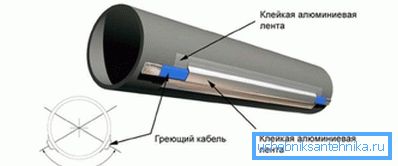
Thus, before insulating pipes on the street, you should carefully read the material proposed in our article. Such advance preparation will ensure you reliable and long-term operation of the pipeline regardless of the temperature outside the window.